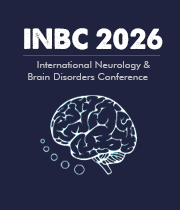Title : Deciphering astrocytic responses to alcohol in the striatum through combined manual and deep learning methods
Abstract:
Astrocytes, as key components of the neurovascular unit, play a significant role in maintaining blood-brain barrier (BBB), regulating neurotransmitter homeostasis, and modulating neuroimmune signaling. Changes in astrocyte density can influence the stability and permeability of the BBB, making astrocyte count a valuable biomarker for assessing alcohol-induced neurotoxicity. This study focuses on the spatial distribution of astrocytes in grey matter (GM) and white matter (WM) of the human striatum, providing a comprehensive understanding of their role in structural vulnerability to alcohol-related damage.
Formalin-fixed brain tissue samples were obtained from the Latvian State Center for Forensic Medical Examination. The study comprised 42 striatal autopsies, which were subdivided into three groups: young alcohol users, chronic alcohol users, and controls. The samples were processed using standard histopathological procedures and analyzed using anti-GFAP immunohistochemistry to label astrocytes, followed by manual cell counting. We also employed deep neural networks to systematically assess astrocyte density and morphology across the striatal regions. In particular, we implemented convolutional neural network architectures such as U-Net for segmentation, allowing us to automatically identify and quantify astrocytes in high-resolution histology images. This approach reduces observer bias and ensures more consistent assessments of cellular features like size, shape, and branching complexity. Additionally, we incorporated pre-trained “foundation models” to further enhance the accuracy of astrocyte detection.
Compared to the controls, both the chronic and young alcohol user groups demonstrated a significantly higher number of GFAP-positive astrocytes in the WM. However, the total number of GFAP-positive astrocytes in the GM did not show any significant differences between groups.
The increased density of GFAP-positive astrocytes in the WM underscores the regional specificity of cellular responses to alcohol dependence, despite the lack of significant differences in GM astrocyte counts. These findings suggest that WM astrocytes are more susceptible to alcohol-induced structural remodeling, potentially due to their role in maintaining axonal integrity. These results support the theory that WM volume shrinkage in alcohol-dependent individuals is linked to astrocytic adaptations, even in young alcohol users. Our findings, supported by deep learning-based feature aggregation, provide insights into astrocytic responses in WM and their potential role in alcohol-related microstructural alterations. The use of advanced computational tools reveals subtle spatial distributions of astrocytes within both GM and WM, offering a more precise understanding of how chronic alcohol use impacts the cellular architecture.




